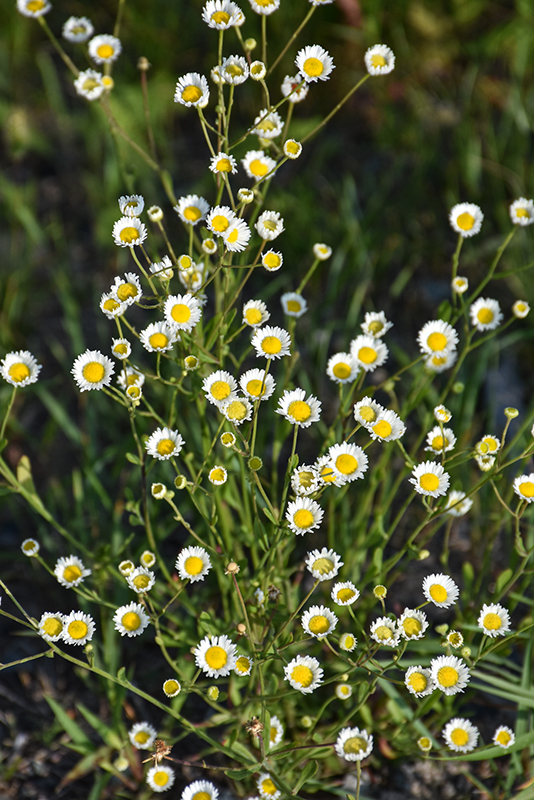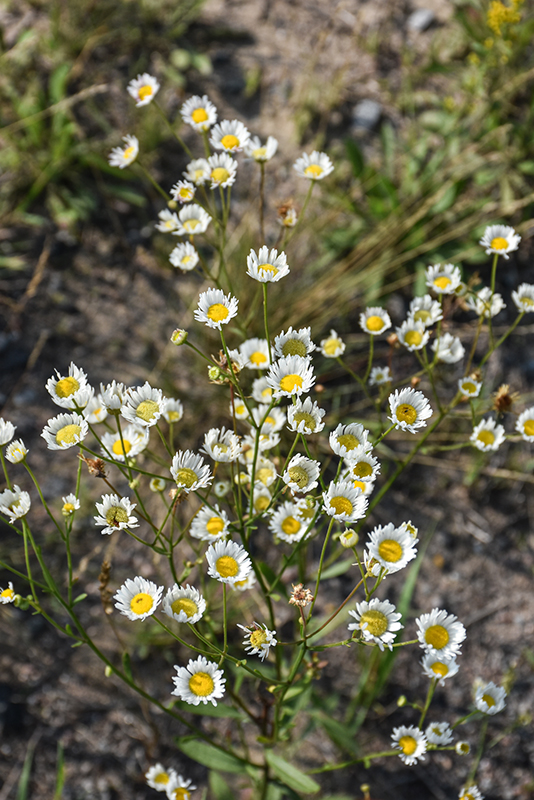Plant Height: 14 inches
Flower Height: 28 inches
Spread: 24 inches
Sunlight:
![]()
![]()
Hardiness Zone: 2
Other Names: Rough Fleabane, Daisy Fleabane
Description:
An upright biennial that features white daisy-like flowers with gold centers that are sometimes tinged with blue or pink; blooms from spring to fall, great for borders, beds, rock gardens or naturalizing; low maintenance-remove spent flowers
Ornamental Features
Prairie Fleabane has masses of beautiful semi-double white daisy flowers with yellow eyes at the ends of the stems from late spring to early fall, which are most effective when planted in groupings. The flowers are excellent for cutting. Its narrow leaves remain green in color throughout the season.
Landscape Attributes
Prairie Fleabane is an herbaceous biennial with tall flower stalks held atop a low mound of foliage. It brings an extremely fine and delicate texture to the garden composition and should be used to full effect.
This is a relatively low maintenance plant, and is best cleaned up in early spring before it resumes active growth for the season. It is a good choice for attracting bees and butterflies to your yard, but is not particularly attractive to deer who tend to leave it alone in favor of tastier treats. Gardeners should be aware of the following characteristic(s) that may warrant special consideration;
- Self-Seeding
Prairie Fleabane is recommended for the following landscape applications;
- Mass Planting
- Rock/Alpine Gardens
- Border Edging
- General Garden Use
- Naturalizing And Woodland Gardens
Planting & Growing
Prairie Fleabane will grow to be about 14 inches tall at maturity extending to 28 inches tall with the flowers, with a spread of 24 inches. It grows at a fast rate, and tends to be biennial, meaning that it puts on vegetative growth the first year, flowers the second, and then dies. However, this species tends to self-seed and will thereby endure for years in the garden if allowed.
This plant does best in full sun to partial shade. It is very adaptable to both dry and moist growing conditions, but will not tolerate any standing water. It is considered to be drought-tolerant, and thus makes an ideal choice for a low-water garden or xeriscape application. This plant does not require much in the way of fertilizing once established. It is not particular as to soil pH, but grows best in poor soils. It is somewhat tolerant of urban pollution. This species is native to parts of North America..


